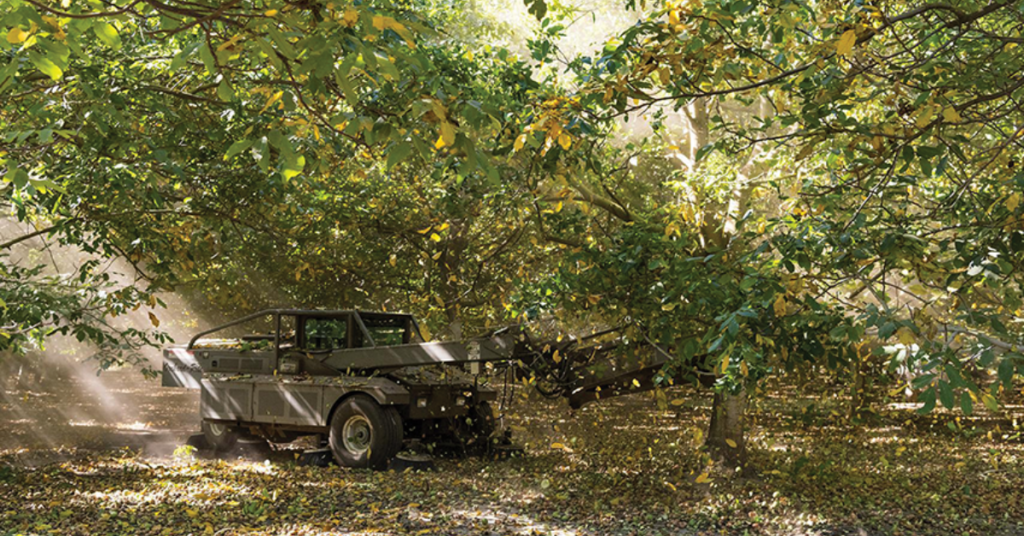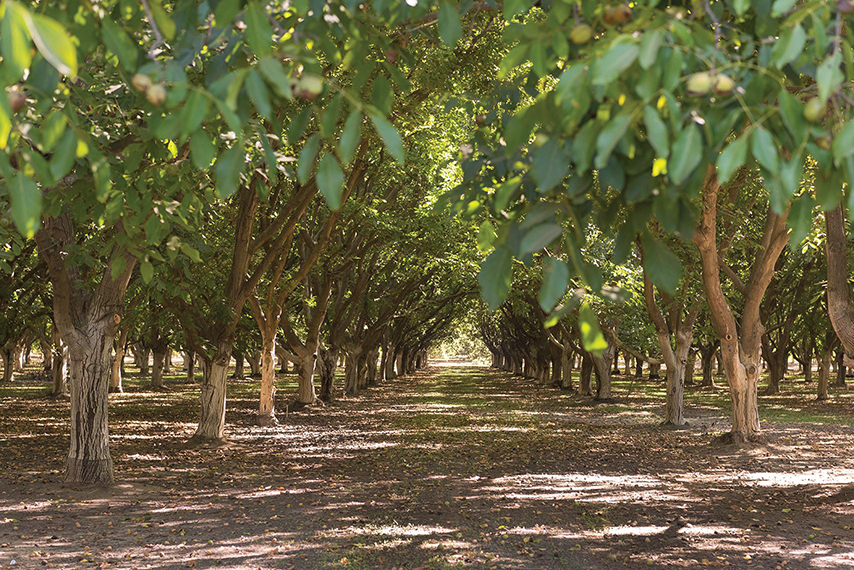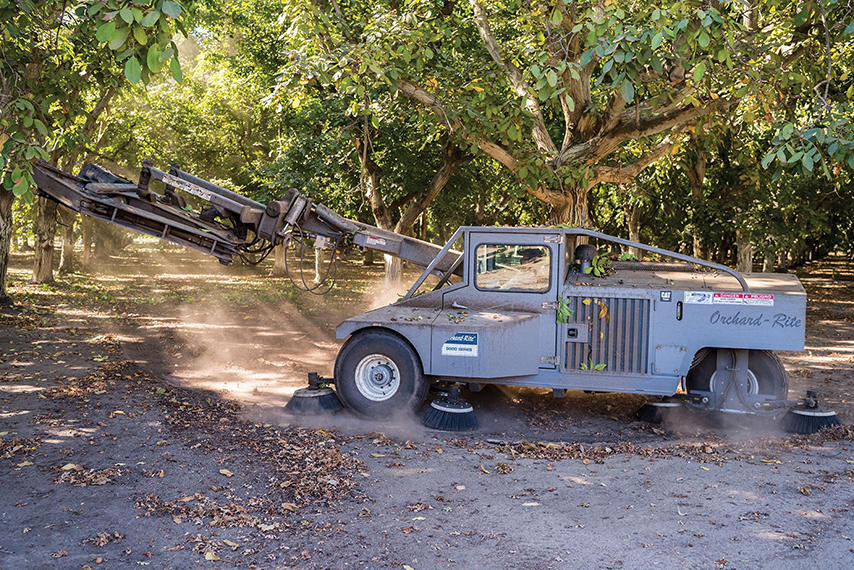
July/August 2023
2023 Walnut Crops
National Nut Grower had an opportunity to discuss 2023 walnut crops with Joe Grant, director of research for for California Walnut Board, and he provided some great information.
What advice can you give to walnut growers about protecting crops this year?
Joe Grant (JG): In a price environment like we have today, where grower returns may not be adequate to cover production costs, growers must make difficult decisions when it comes to crop protection and other practices that cost money and impact yield and quality — disease and insect and control, pruning, irrigating, fertilizing, etc.

With a perennial crop like walnuts, it’s important to recognize that cutting back in any of these categories impacts this year’s AND future years’ yields and quality. Dropping a spray or two for a key pest, for example, means that pest is going to be worse this year — and likely in the following years — leading to higher future costs to bring them back under control.
Similarly, reducing water or fertilizer applications reduces quality this year and tree growth, which impacts yields next year, and potentially beyond. In other words, unlike annual crops, actions taken to reduce costs this year often have multi-year effects that need to be part of the decision-making process in prioritizing where to cut.
What are the biggest pest or disease issues growers should be watchful of this season?
JG: I think it is too early in the season to know what to expect in terms of weather and potential impacts this year. Warm weather drives the development of key insect and mite pests, so a warm summer means more pest pressure, which means more control intervention. We discussed walnut blight and the impact that rainy spring weather has on it. With luck, the rainy season is mainly behind us for this year. As rainy as it has been so far, I suspect that growers with earlier leafing varieties have likely been hit harder by blight.

We can’t control the weather but careful attention to meeting the water demands of orchards during summer and fall can help reduce heat damage to some extent. We do anticipate seeing more orchards develop problems with Phytophthora root and crown rot, a disease promoted by prolonged late winter/spring rootzone flooding.
Can you share insight on mitigating pests and diseases and provide us with any options that are being researched?
JG: The crop protection product industries do a good job of keeping walnut growers supplied with new products to combat key pests. Our industry is under significant regulatory activity that puts growers in the position of having to rely on “softer” and narrower range products. As a general rule, these products are more selective, more expensive, less effective, have shorter residual control activity than the pesticides they replaced. This means growers need to spray more to get the same control they could achieve with past products.
Like other industries, the California Walnut Board is funding research to develop alternative tactics, including biological control, better monitoring methods, non-chemical suppressive technologies like mating disruption, pest and disease resistant rootstocks and varieties.
What would you suggest to growers this year in terms of preparing for any and all postharvest situations?
JG: Quality is key to long-term success and consumer enjoyment, which translates to more consumption. The industry is reviewing new grades and standards for incoming walnuts and outgoing shipments. There is no room for growers to deliver shriveled, moldy and undersized walnuts. The marketplace is too demanding. Proper inputs, such as water, fertilizer and pest controls are critical to maximizing yield and quality.

Are there any new storage solutions available or being researched?
JG: Growers deliver crops to handlers, and it is the handlers that store the crop until it sells. Rancidity is a huge problem for walnuts, limiting the time they can be stored and degrading oil quality and flavor over time. There was a time when the world walnut supply did not exceed demand, and in those days, California handlers could “sell everything we produced” in a timely manner. We need a solution for rancidity.
 We are funding research to explore the possibility of breeding new varieties that are less prone to this problem, but this is, of course, a long-term solution. One key to preserving quality and shelf life is to maintain the cold chain from handler to consumer. We are developing new storage and handling materials to better educate all of the “gate keepers” who handle walnuts. This includes consumer messaging on packaging and throughout our consumer communication programs.
We are funding research to explore the possibility of breeding new varieties that are less prone to this problem, but this is, of course, a long-term solution. One key to preserving quality and shelf life is to maintain the cold chain from handler to consumer. We are developing new storage and handling materials to better educate all of the “gate keepers” who handle walnuts. This includes consumer messaging on packaging and throughout our consumer communication programs.
Other approaches being explored include controlled atmosphere commercial storage and packaging materials that exclude oxygen.
For more information on the California Walnut Board, visit walnuts.org.







